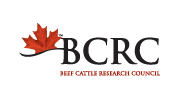Use of high-moisture corn products for finishing cattle and corn residue to extend the grazing season for pregnant beef cattle
| Project Code: | FDE.03.18 |
| Completed: | In Progress. Results expected in September 2023. |
Project Title:
Use of high-moisture corn products for finishing cattle and corn residue to extend the grazing season for pregnant beef cattle
Researchers:
Greg Penner, University of Saskatchewan
Dr. Bart Lardner, University of Saskatchewan, Kathy Larson, University of Saskatchewan
Background:
As corn varieties with lower heat units are released corn has become more popular across Canada and producers are looking for economical ways to best utilize this crop on their operation. Feeding high moisture corn (HMC) (made from harvesting and ensiling corn kernels) and snaplage (made by chopping and ensiling the ear of corn including the husk and cob) are both processes that may allow producers to take advantage of the high nutrient content of corn.
Objectives:
The objective of this project is to evaluate the use of high-moisture corn products (high-moisture corn and snaplage) as an energy substrate in diets for growing and finishing cattle. In addition, we aim to evaluate the potential to utilize corn residues as a winter feed source for pregnant beef cattle.
What they will do:
Researchers will evaluate the yield, quality and cost of high moisture corn and snaplage. There are 4 different studies that will be conducted
1) They will compare different backgrounding diets, they will use a control barley-based diet, barley silage diet with a portion of barley grain replaced with snaplage, or barley silage diet with a portion of barley grain replaced with high moisture corn.
2) They will feed those same diets to ruminally and duodenally cannulated heifers to evaluate metabolism and site and extent of digestion.
3) They then want to compare grazing residue after harvesting either snaplage or high moisture corn to cattle grazing whole barley swaths.
4) An in vitro trail will be conducted on various parts of the corn to determine chemical composition and digestibility.
Implications:
This will tell us the optimal way to use snaplage and HMC in backgrounding diets and if grazing residue from these products is an economical option for winter grazing cows.







